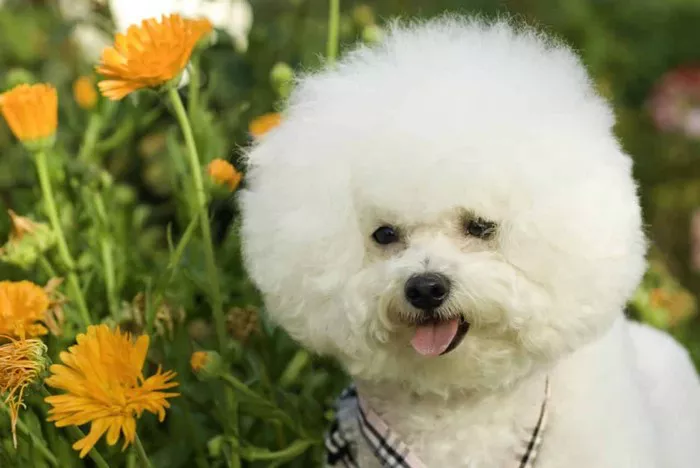The Bichon Frise, with its fluffy white coat and cheerful demeanor, has captured hearts worldwide. But where did this charming breed originate? This article delves into the breed’s historical roots, cultural significance, and evolution into a modern companion dog.
The Mediterranean Origins
The Bichon Frise traces its ancestry to the Mediterranean region, specifically to small companion dogs bred in the 13th–14th centuries. These early ancestors were likely related to the Barbet, a water spaniel, and the Maltese, another small Mediterranean breed.
Early Roles and Spread
Sailors’ Companions: Bichons were popular among Mediterranean sailors, who valued them for their companionship and pest-control skills on ships.
Italian Influence: By the Renaissance, these dogs were brought to Italy, where they became favorites of nobility. Their refined appearance and playful nature made them symbols of luxury.
The breed’s name, “Bichon”, derives from the French term “barbichon” (meaning “small Barbet”), later shortened to “bichon”. The addition of “frisé” (French for “curly”) reflects their signature coat.
The French and Belgian Connection
In the 16th century, Bichons were introduced to France during the reign of King Francis I. Their popularity soared under French aristocracy, particularly during the Napoleonic era, when they were rebranded as the “Ténériffe” dog, named after Spain’s Canary Islands (though this label later faded)89.
Standardization and Revival
Breed Development: French and Belgian breeders refined the Bichon into its modern form, emphasizing traits like a compact size, hypoallergenic coat, and sociable temperament.
Near Extinction: The breed nearly vanished after World War I and II due to disrupted breeding programs. A group of dedicated French and Belgian enthusiasts revived the Bichon in the 1920s–1930s.
Official Recognition: The Fédération Cynologique Internationale (FCI) recognized the Bichon Frise as a Franco-Belgian breed in 1933, cementing its modern identity.
Physical and Behavioral Traits
Distinctive Features
Coat: A double-layered, curly white coat (occasionally cream or apricot) that requires regular grooming to prevent matting.
Size: Standing 9–12 inches tall and weighing 7–12 pounds, they are classified as a toy breed.
Expression: Dark, round eyes and a “powder puff” tail curled over the back create their iconic cheerful look.
Personality
Bichons are known for their adaptable and affectionate nature:
Social Butterflies: They thrive on human interaction and bond deeply with families, often suffering from separation anxiety if left alone.
Playful Yet Calm: Their energy is balanced by a love for lounging, making them suitable for apartment living.
Low Aggression: Unlike some small breeds, Bichons rarely display territorial behavior, though they may bark to alert owners.
Cultural Impact and Modern Popularity
From Royal Courts to Pop Culture
Renaissance Art: Bichons appear in paintings by Titian and Goya, symbolizing wealth and refinement.
Circus Performers: In the 19th century, their intelligence and trainability made them stars in European circuses.
Modern Symbol: Today, they rank among the top 50 most popular breeds in the U.S., celebrated for their hypoallergenic qualities and Instagram-worthy looks.
Global Distribution
While France and Belgium remain central to their heritage, Bichons are now bred worldwide. Key breeding hubs include:
North America: The American Kennel Club (AKC) recognized the breed in 1972.
Asia: Rising demand in countries like China and South Korea has spurred specialized breeding programs.
Challenges in Preservation
Health Concerns
Despite their longevity (12–15 years), Bichons are prone to:
Allergies: Skin and food sensitivities require careful dietary management.
Dental Issues: Their small mouths predispose them to periodontal disease.
Luxating Patella: A common joint condition in small breeds.
Ethical Breeding Practices
Overbreeding for profit has led to issues like poor coat quality and genetic disorders. Reputable breeders prioritize health testing and adhere to FCI or AKC standards.
Conclusion
The Bichon Frise’s journey—from Mediterranean shipmates to aristocratic lapdogs and modern family pets—reflects its resilience and enduring charm. Rooted in French and Belgian history, this breed’s cheerful spirit and adaptability continue to win admirers globally. For prospective owners, understanding its origins enriches the appreciation of this “cotton ball” companion’s unique legacy.
Related Topics:
WHEN TO CUT A BICHON FRISE PUPPY’S COAT
HOW MUCH DOES IT COST TO BUY A BICHON FRISE?
HOW OFTEN SHOULD I WALK MY BICHON FRISE?


